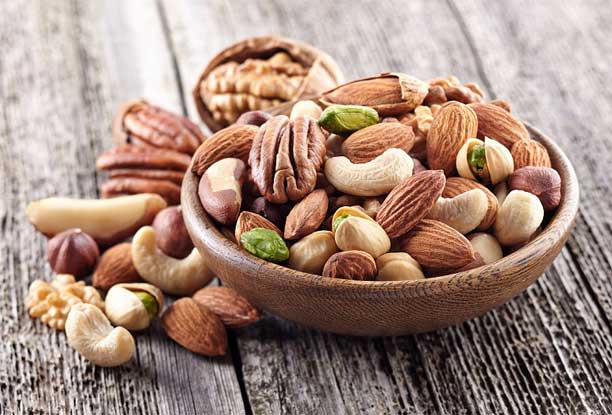Cashew is a famous nut having a place with the family Anacardiaceae. The English name of cashew comes from a Portuguese word. It is very much filled in the heat and humidities for the cashew nut and cashew apples. The name Anacardium alludes to the state of the fruit which takes after a reversed heart. Cashew tree is little, evergreen and achieves a tallness of 10-12 meters with a sporadic trunk. The leaves are to some degree winding fit as a fiddle, rugged finished, elliptic to praise and gauge around 4-22 cm long and 2-15 cm in broadness with a smooth edge. The blossoms are borne in a panicle or corymb estimating 26 cm long. The blossoms are green yet later on transform into red with five slim, intense petals and are 7-15 mm long. The fruit of cashew tree is an embellishment fruit which is pear-molded in structure creating from the pedicel and container of the bloom. The fruit is known as cashew apple and maranon in Central America. The fruit is pale and gets red in the wake of aging and 5-11 cm long. The fruit is eatable with a sweet smell and sweet taste. The mash of cashew apple is succulent yet the skin is delicate so it makes trouble in transport.

The genuine fruit of the cashew tree is a kidney formed drupe which creates at end of the cashew apple. The drups grows first and afterward the pedicel ventures into cashew apple. Inside the fruit there is a solitary fruit known as cashew nut by intwebdirectory. In the plant sense cashew nut is really the seed. The seed is encircled by a hard shell containing allergenic phenolic gum, anarcadic corrosive, and a poten skin aggravation. The synthetic idea of the skin aggravation is actually like that of allergenic oil known as urushiol. A few group are hypersensitive to cashew nuts however the nuts are less unfavorably susceptible in contrast with different nuts and peanuts.
Cashew is really local to Brazil yet the credit for the presentation of this nut in India goes to the Portuguese. From India the fruit got spread in Southeast Asia and Africa. The cashew nutshell fluid (CNSL) is a side-effect created after the handling of the cashew nut rich in anacardic acids. The fluid is extremely powerful in the treatment of teeth abscesses brought about by the Gram positive microscopic organisms. The bark is scratched and doused and bubbled and utilized for treating loose bowels. The gum got from the tree is utilized in staining. The seeds are ground to make powders to be utilized as antidote against the snake nibbles. The nut oil bears antifungal properties. Anacardic corrosive is utilized for the creation of cardanol which is utilized as a frictional and covering material.